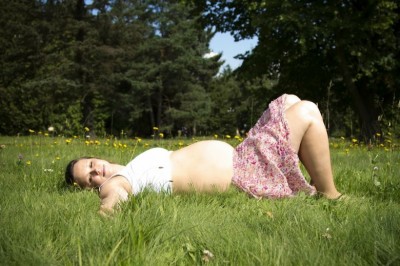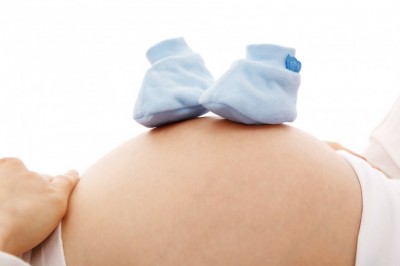Skin and hair changes in pregnancy
Skin and Hair Changes During Pregnancy
So youre pregnant. Congratulations!!! While you are pregnant you may look and feel better than you ever have. Your more unfortunate sisters may experience the opposite. The wonderful thing is you will return to your normal after giving birth. The changes you notice during pregnancy are normal and are generally temporary. Some of the changes you may notice are:
Linea Nigra is a yellowish to dark brown coloring that extends in a line from your belly button to the top of your pelvic area. This may either lighten or disappear completely after pregnancy. It is not harmful and is completely normal. Most women will have some degree or other of this during pregnancy. This may also appear while you are taking some types of birth control and is not harmful.
"Mask of Pregnancy" or Chloasma, is a yellowish or dark brown coloring that appears around your eyes and may extend to the top of the cheeks. Chloasma is a normal variation in coloring which may occur. This too, may happen during use of birth control when hormones are used and is not harmful.
The area around the nipples, called the areola, can darken and become more prominent. This is normal and unless breast feeding, may gradually lighten or disappear completely after pregnancy. A majority of women may experience this to some extent while your body gets ready to feed your infant after birth.
You may also notice your knuckles and skin creases will darken during pregnancy this will also return to normal or lighten after you give birth.
Moles which you may already have on your skin may darken during pregnancy and you may develop some skin tags. Skin tags, medical name Acrochordon, are small extensions of flesh colored or brownish color skin. They are benign overgrowths of skin, and may occur during pregnancy or times of increased weight even if a temporary weight change. Women are more likely to develop these under the breasts in an area of skin which is rubbed by the bra. They may be a small column of skin or a pendulous tag of skin as big as a grape. These may also occur on skin which is irritated by elastic on panties, collars, or under the arm but are not restricted to these areas. The skin tags may drop off without being noticed or may persist until removed. A skin tag which may be irritated by clothing can be easily removed after pregnancy by a physician.
Moles which darken during pregnancy do so under the influence of the hormone running through the body while carrying your child. This increase in coloration may disappear or lighten after pregnancy. Moles are usually flat on the skin whereas skin tags rise off of the skin and generally erupt on areas of skin where clothing is restrictive and rubs areas of the body.
The darkening of surgical sites made during your pregnancy may also occur.
A lot of women develop stretch marks during pregnancy, which can occur on hips, breast, abdomen or legs. Stretch marks, medical name striae gravidarum, may appear as dark pink lines in the beginning and may be quite itchy. After pregnancy they fade into pale wrinkles but they are permanent. It is not known for sure why these happen, but they probably happen from a combination of pregnancy hormones and stretching of the skin. Women may be more likely to get stretch marks if they are expecting a big infant, if you gain a lot of weight in pregnancy, or if you are very young. Agreement about the role of other factors such as being overweight before pregnancy, being a member of certain ethnic groups or a family history of developing stretch marks is not known.
Many creams, oils and lotions as well as other types of remedies have been developed and marketed as a prevention or treatment of stretch marks but none have been proven to prevent or treat stretch marks. There have been some some studies which indicated some creams containing ingredients such as vitamin E, menthol, elastin, or collagen-elastin hydrolysates can prevent some of stretch marks from developing. Other studies have proven creams containing vitamin E had no obvious effect. It is up to the individual to determine if they wish to use recommended creams, lotions, or oils, as they are generally safe to use. These may or may not help prevent stretch marks.
Some women will develop patches of red bumps and itchy skin during their third trimester. The medical name for this is dermatosis of pregnancy. Odds of getting this are approximately 1 in 100 and the cause is not known. The skin affected may be on the abdomen and may extend to the thighs and arms and buttocks. While you may use unscented lotions to soothe the rash, treatment should be left to the discretion of your obstetrician. The obstetrician may prescribe steroid creams to apply to the rash or oral antihistamines to lessen the itching. Do not use over the counter medicated creams unless prescribed by your physician.
Hair may feel thicker than normal during pregnancy, however your hair is actually not getting thicker it is actually having a prolonged length of growth influenced by estrogen. It will resist falling out as normal and may look shiner and change in texture. For example, hair that is straight may be curlier or hair that is curly may become straighter while you are carrying your child. In contrast some women may experience an increase in oil production which will produce oily skin and hair. These changes are completely normal. Body hair may also grow and you may have to shave or tweeze more than normal. After pregnancy your hair and skin will return to normal and the hair which was resistant to falling out will start to fall. You may notice this when you are brushing your hair.
Your nails may also experience a change while pregnant. Some women experience an increased growth of nails and will find their nails grow longer and stronger. Other women may experience split nails. Both will return to your normal after the pregnancy. You can do several things to help your nails to return to normal. First, when you are going to have your hands and nails in water and soap, you can wear gloves to prevent your nails from drying out. You can also use oil treatments to help strengthen your nails.
Do not use bleaches for your skin or depilatories which may be absorbed into the skin. Anything ingested or absorbed by you will also be ingested or absorbed by your child. Please keep this in mind for every substance you may come in contact with unless prescribed by your doctor. If you are concerned about any change of your skin, talk to your doctor and they can guide you in the right decision. Any medication used during your pregnancy must be approved by your obstetrician as safe during pregnancy. Remember you are carrying precious cargo and you want you and your child to be healthy.






















